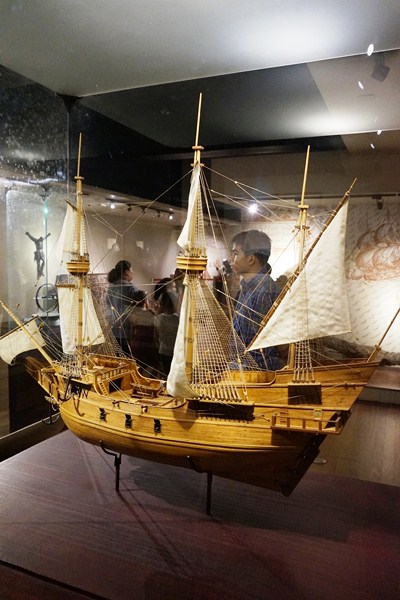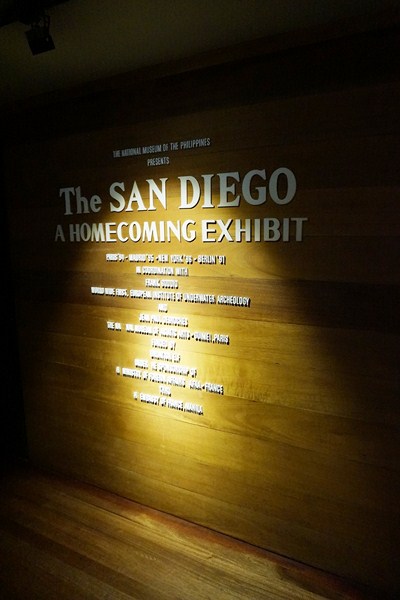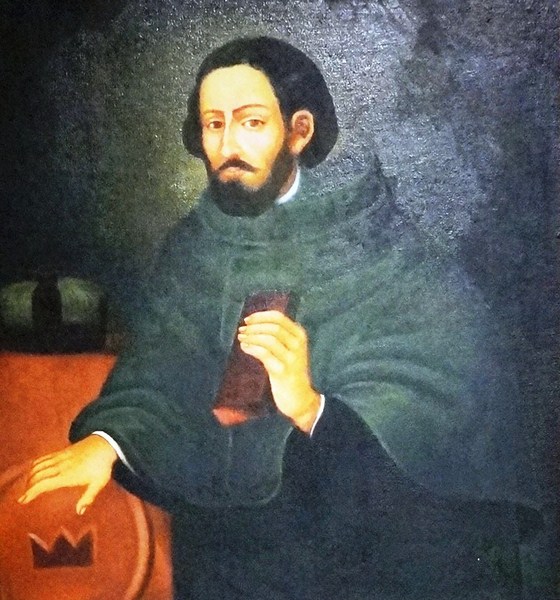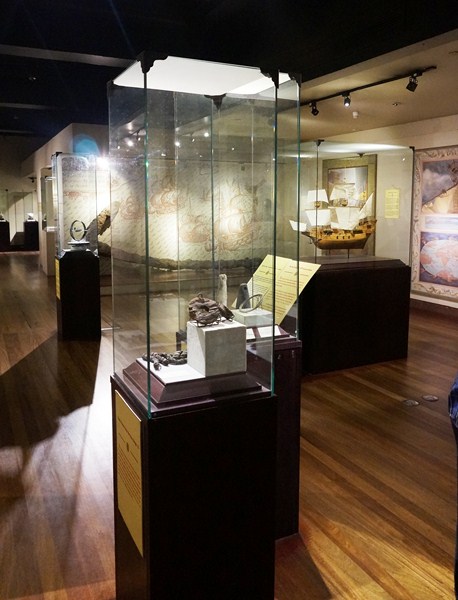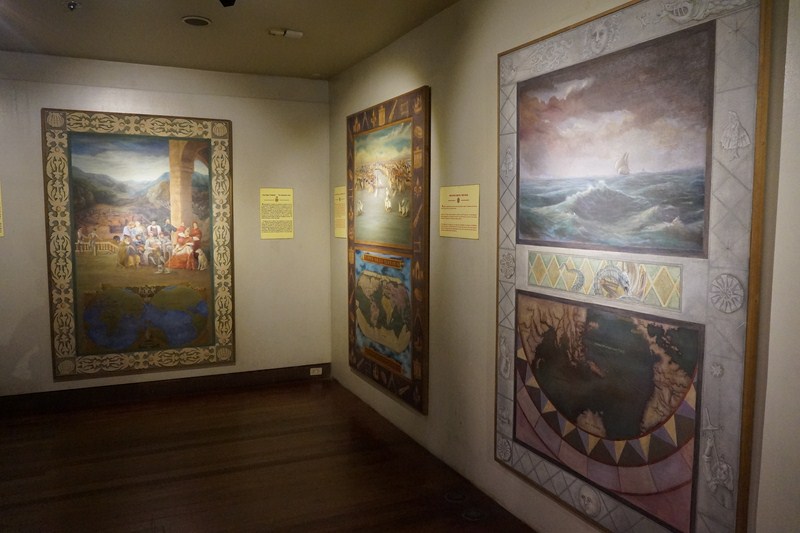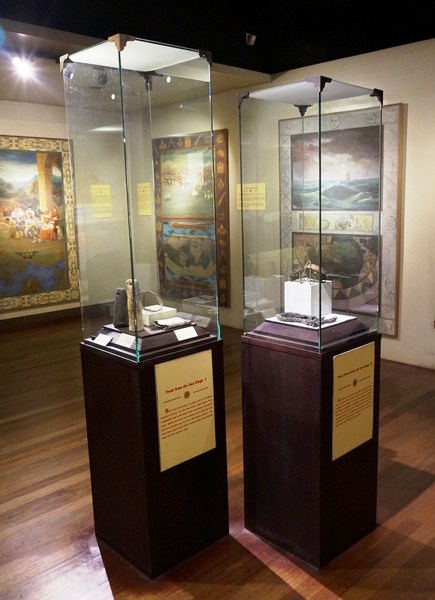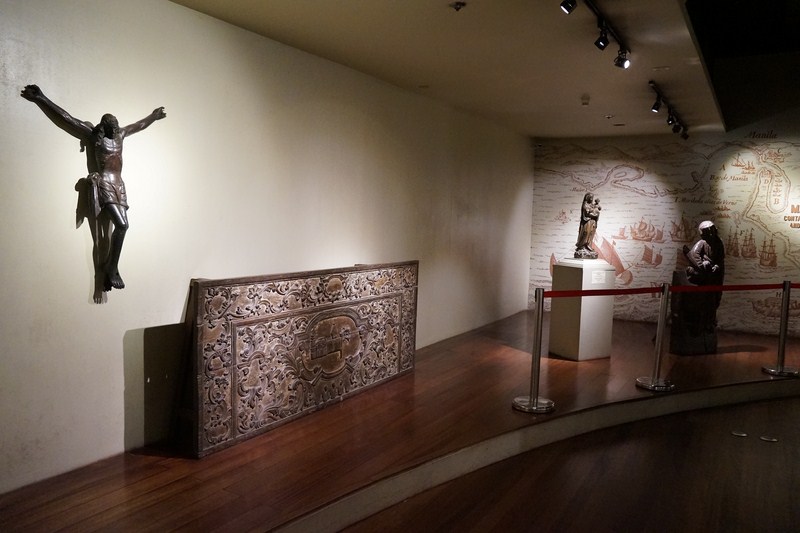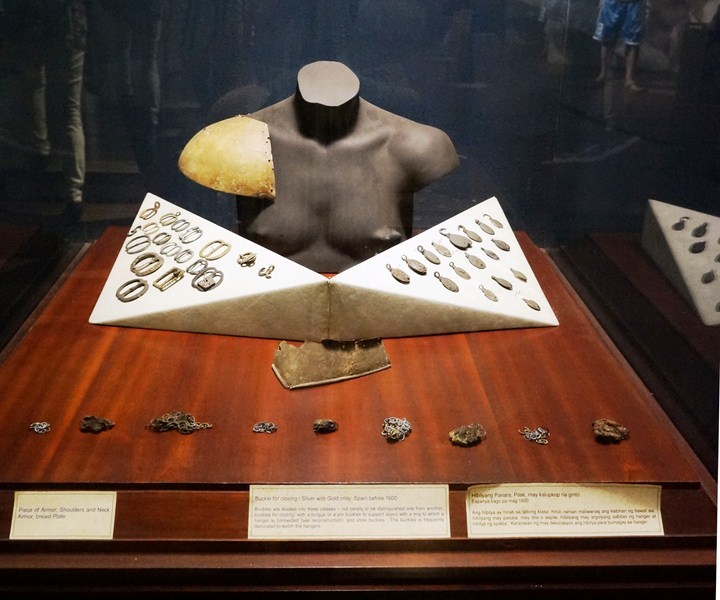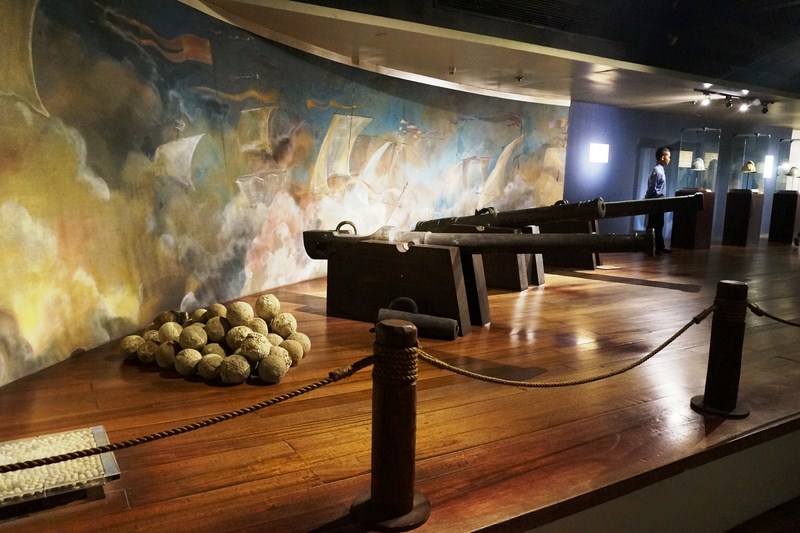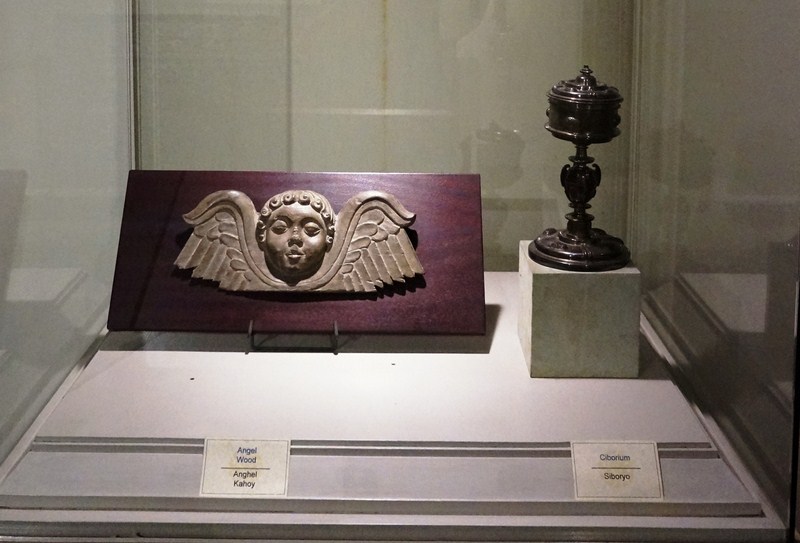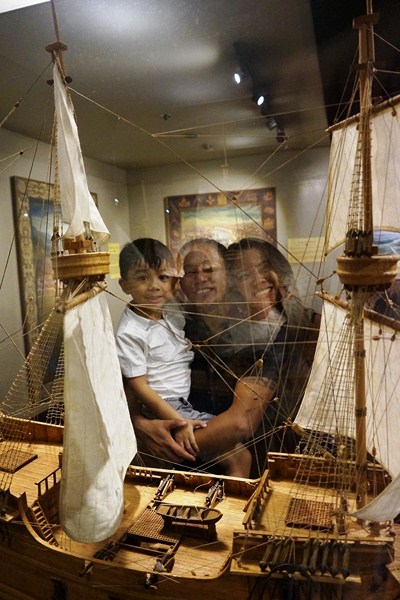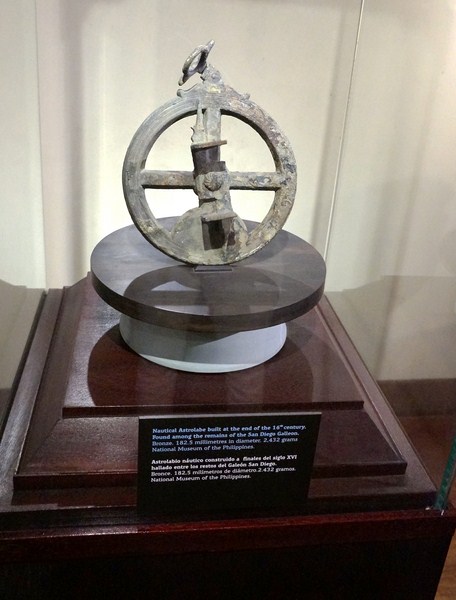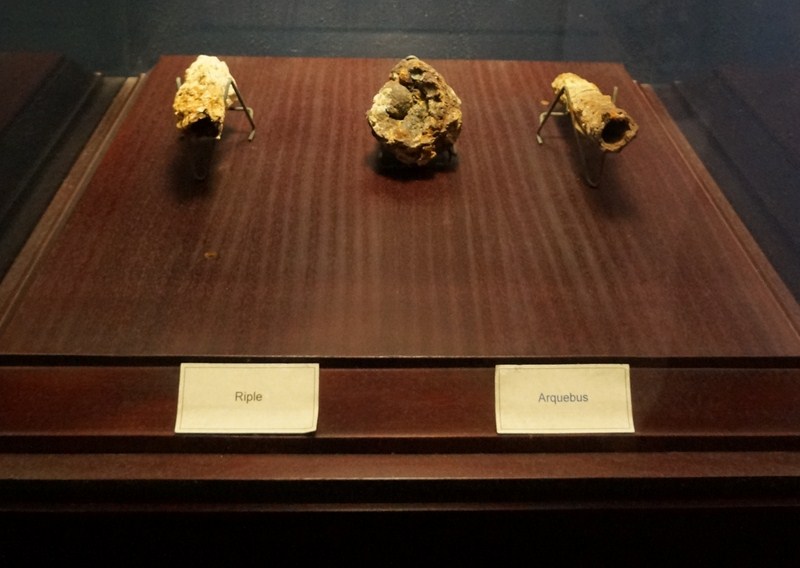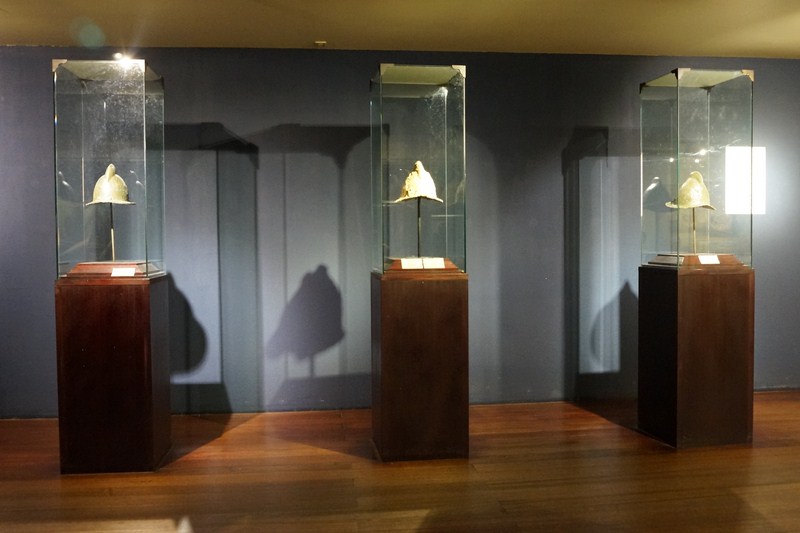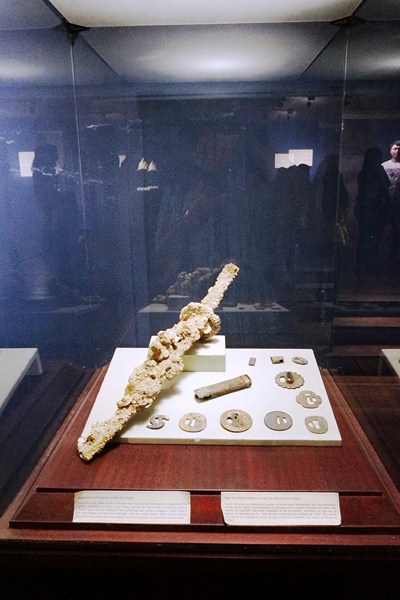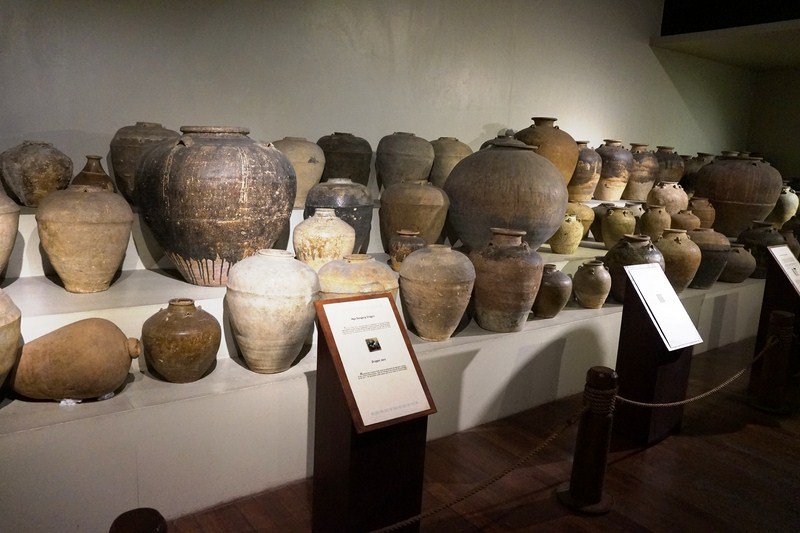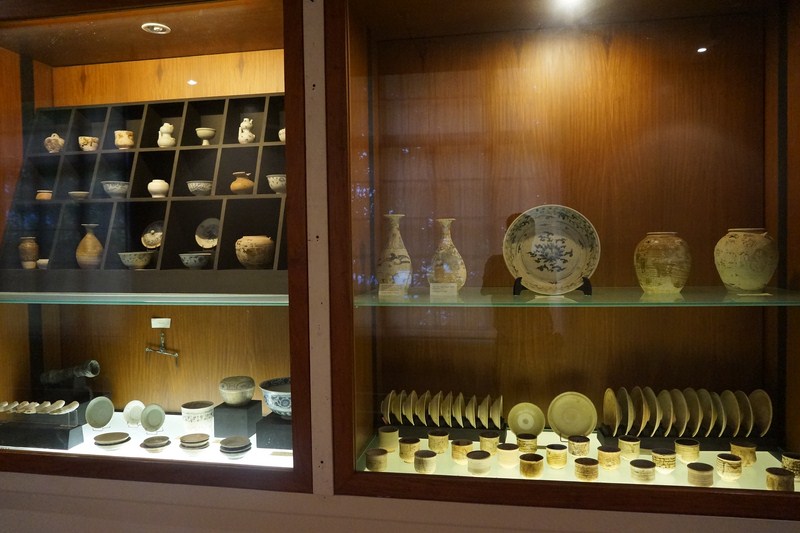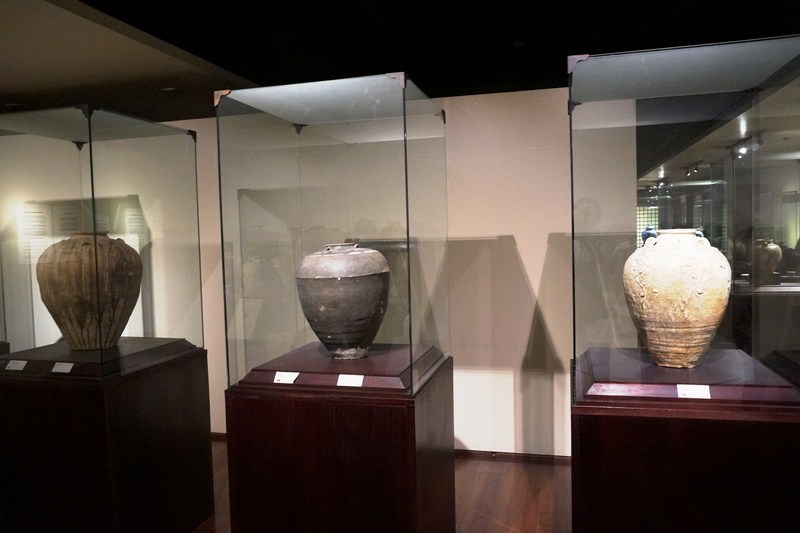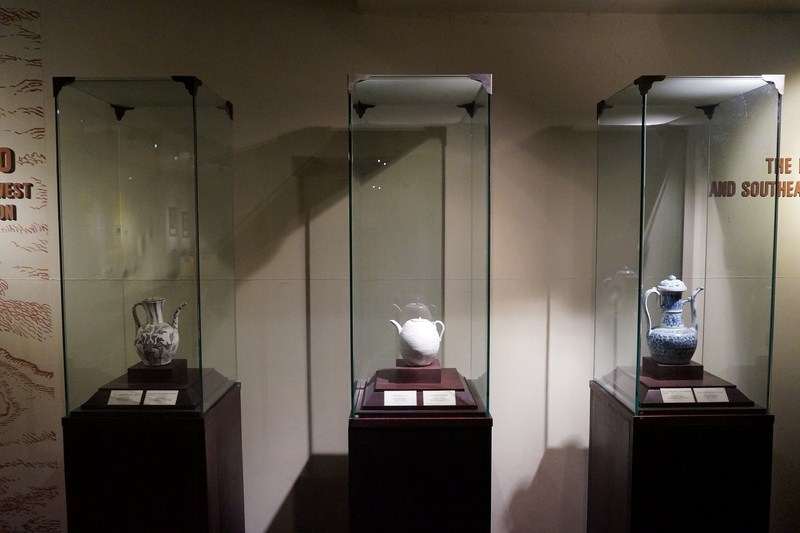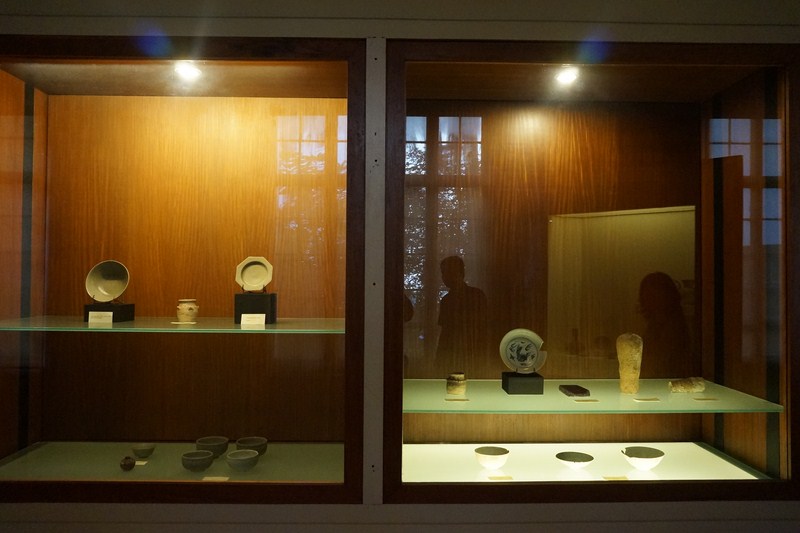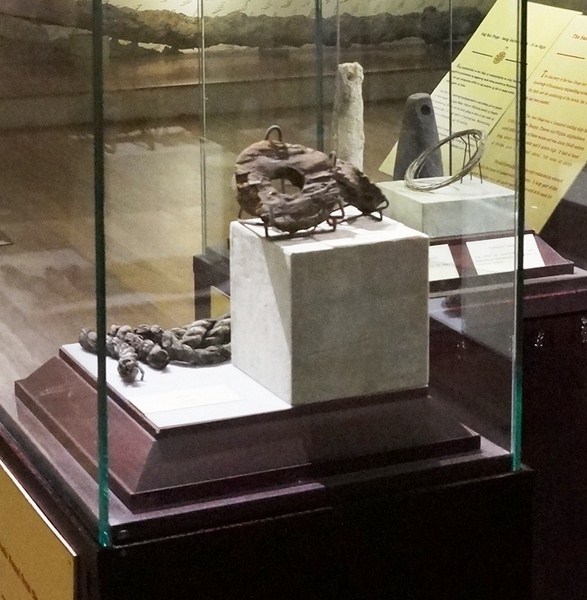The “San Diego: A Homecoming Exhibit” occupies the 4 seminar rooms at the ground floor (Cabinet Ladies Foundation, Nestle Philippines, SGV & Co. and the SSS) and at Asianbank Corp./A. Soriano Corp./Phinma Group Gallery at the second floor. On display here are 5,000 artifacts that represent a time capsule of the known world at that time, recovered from the San Diego, one of 59 galleons that sank in Philippine waters and one of three (the others are the Nuestra Senora de la Vida and the San Jose) where artifacts have been retrieved. Its recovery confirmed the Philippines’ reputation as a rich ground for underwater archaeology.
The San Diego, originally named the San Antonio, was a three-masted galleon, a trading ship plying the Manila to Acapulco (Mexico) route. Said to be the first Filipino big boat, it was probably built in Cebu around 1590 and 1600 by Basque shipwrights, Chinese craftsmen and a big Filipino labor force. Its weight was placed between 200 to as heavy as 500 tons, was between 35 to 40 m. long and 20 m. wide. The San Diego had four decks and could hold about 700 tons of cargo. Different kinds of heavy local wood (bitaug, apitong) measuring 35 to 40 m. long, 12 m. wide and 8 m. high were used for its construction.
As a merchant ship, the San Diego was, however, not designed for naval combat yet this reconditioned, 14-gun ship (under Vice-Governor Antonio de Morga) was engaged, together with the 200-ton and 12-gun San Bartolome (under the experienced naval officer Juan de Alcega), in a fierce, six-hour naval battle, on December 14, 1600, with the Dutch privateers Mauritius and Concordia under Admiral Oliver Van Noort off the Batangas coast.
The San Diego, as a result of damage by numerous cannonballs it had taken during the battle and a major leak discovered after the violent impact with the four times smaller Mauritius of Van Noort, was blown by a northeasterly wind, sailing 330 to 660 ft. (100 to 200 m.), nosed over and went straight to the bottom. The San Bartoleme, on the other hand, chased the Concordia under Captain Lambert Biesman and, off Lubang Island in Mindoro, was boarded and captured. Some 221 sailors died (109 Spaniards, 105 Filipinos and 7 Dutchmen). Twenty-six Dutch men were wounded.
The San Diego remained underwater for almost four centuries, its location unknown because Morga’s account of the battle, in his self-serving Sucesos de las Islas Filipinas (“Historical Events of the Philippine Islands” (published in 1609), was incomplete and inaccurate. In 1991, however, the wreck was discovered by Franck Goddio, a French underwater archaeology enthusiast, with the permission and cooperation of the National Museum, in near-perfect conditions, at 170 ft. (50 m.) deep waters about 900 m. northeast of Fortune Island, in an undisturbed, sand-covered valley.
From January 1992 to May 1993, at enormous expense and with modern and sophisticated underwater technology, a treasure trove of 34,000 archaeological items, including 14 bronze cannons, 1,500 pieces of intact Ming Dynasty porcelain ware and navigational instruments (a major scientific find as they represent a much delayed, but altogether appropriate, reply to Chinese inventions such as the compass, an 11th century Chinese innovation), were retrieved.
After initial restoration in Manila, the artifacts traveled to Paris (France) for complete restoration and exhibition on September 1994. Later exhibitions were done in Madrid (Spain) in 1995, New York (U.S.A.) in 1996 and Darhlen Museum in Berlin (Germany) in 1997 before it returned to its new home at the Museum of the Filipino People (now the National Museum of Anthropology) in Manila.
Check out “National Museum of Anthropology” and “Museum of the Filipino People”
The exhibition gallery on the ground floor shows the wreck site. Eleven of the 14 recovered cannons brought on board from the fortress of Manila are displayed at the museum’s ground floor and the rest at the second floor. Outstanding examples of bronze casting techniques, the cannons gave an excellent overview of artillery at the end of the 16th century. Of the 14, 7 are dolphin-types (with handles shaped like dolphins), 2 are foot-types, 1 lion-type, 1 box-type and 2 are unidentified. Their maximum lengths range from 208 to 359 cms., their mouth diameters range from 14.5 to 27.5 cms. and their bore diameters range from 7 to 18 cms.. They were fabricated in the Philippines, Flanders (Netherlands) and Portugal. Those from Portugal were more advanced and were called breech loaders.
There were 8 grades of caliber which required different types of ammunition. There were 197 cannonballs recovered. The iron cannonballs were for the smaller cannons and the stone for the bigger ones. The cannonballs range from 6.5 to 14 cms. in diameter and weighed between one and 7 kgs..
The second floor gallery houses Metal Age artifacts from religious art (statuary, wooden angels, ciborium, etc.) from the Intramuros Administration collection. A scaled model of the San Diego was done in 1995 by Robert Carpentier, with scientific supervision of G. Michel L’Hour and Michel Daeffer).
There are also eight 4 ft. by 7 ft. paintings depicting the Galleon Trade; annotated (by Jose Rizal) book copies of Antonio de Morga’s Sucesos de las Islas Filipinas (Historical Events of the Philippine Islands) and Johann Ludwig Gottfried’s Nene Welt und Amerikanishe Historien (New World and the History of the Americas); maps and colored photos of the recovery efforts.
An old, bronze astrolabe, one of the most important treasures recovered from the San Diego, is one of only 67 that have been preserved and, more uniquely, 1 of 5 oldest as well as 1 of 6 or 7 known examples dating before 1600. Called the oldest scientific instrument in the world, the astrolabe is used to determine latitude accurately by measuring the angle a heavenly body (sun or stars) makes with the horizon. It is derived from the planispheric astrolabe invented by Greek mathematicians in ancient Alexandria (Egypt).
The astrolabe appeared in Europe in the late fifteenth century, first used in Portugal and adapted by nearly all Western mariners. The San Diego astrolabe weighed 2,432 gms. and had a diameter of 182.5 mm. and was 17 mm. thick at the top and 18 mm. at the bottom.
The absence of a date and signature on makes it impossible to determine the astrolabe’s geographic origin or date of manufacture. The instrument, however, bears a remarkable resemblance to the Valencia astrolabe at England’s Greenwich Maritime Museum (which almost certainly came from the Spanish Armada). The only difference is that its spokes have footers and no handles. Its similarities lead us to believe that they were made in the same workshop.
Another important discovery was a bronze astronomical ring, the only known example of this type, in terms of both mechanism and shape. With three rings and central compass, it has a diameter of 22.4 cm. Its exact function has not been determined; although it is known that the position of the Philippines on the map was calculated using a similar instrument. The compass was recovered with its glass intact and the original liquid still present inside the glass casing. Other navigational instruments recovered include sounding weights and a ruler which were more suitable for reading charts and navigating in coastal waters than for open ocean voyages.
Aside from the cannons, little remains of ship’s offensive weaponry: arquebuses, muskets and swords. Arquebus spring shots (lead, brass or iron wire) range from 0.4 to 3.5 cms. in diameter. Also found were a gunpowder shovel and cases for musket shot made of lead that were attached together by brass coil.
A glimpse of the soldier’s outfit came from 3 morions (military helmets of copper alloy), pieces of armor (shoulder and neck armor, breastplate), sword handles, belts and shoe buckles. Also a ball mold to press musket and arquebus balls was found.
The possibility of high ranking Japanese samurai (possibly mercenaries) on board the ship can be seen from a pair of recovered Japanese bushi swords, 2 dozen sword decorative elements, a writing set with a rare aubergine (fruit of the eggplant)-shaped porcelain water dropper and two stones for mixing ink.
The San Diego was a galleon (trading ship) before she was pressed into service as a battleship by Antonio de Morga. As preparations were being rushed to meet the Dutch, there had been no time to unload the bulky porcelain cargo in the main hold and these all went down with the ship. To the Western world, Chinese porcelain seems to be the most accurate reflection of China and it was an important part of trade in Manila.
The San Diego carried a cargo of assorted ceramic objects that survived in a much better condition than the metal objects. A majority of the recovered ceramic ware was intact and many pieces were restorable.
They include a precious cargo of more than 500 fine, exceptionally strong, blue and white China porcelain, of different shapes and sizes, with designs described to be of Buddhist and Taoist luck symbols. They date from the Wan Li Period (1573 to 1619) of the Ming Dynasty (1368 to 1644) and come in the form of plates, dishes, bottles and kendis (pitchers).
This special class of pottery is made from kaolin from Jiangxi, near the city of Jingdezhen in China. Their white background is decorated principally with cobalt oxide and applied with a brush under a glaze. The plates, bowls, cups and bottles were mostly decorated with birds, cocks, geese and deer designs which were popular during the 16th century.
At Exhibit Gallery III, we took a look at some of the over 750 big Martaban, Chinese, Thai, Burmese and Spanish or Mexican stoneware jars used to store food (preserved fruits, sardines, salted meat, etc.), wine, vinegar, drinking water and cargo as well as serve as ballast. They date from the sixteenth century and many have applied handles where a rope could be strung to secure and protect them from breaking. Animal bones from preserved meats as well as coconut shells and seed (prunes and chestnuts) remains have been found inside the jars.
There are also over 70 Philippine-made amphora-like earthenware jars influenced by European stylistic forms and types. They were originally used to transport olives and oil, but they also have been used to hold wine, preserved fruit or the tar used to caulk the ship. Their capacity varied from 4 to 15 liters (4.2 to 15.9 quarts) and they weighed between 3 and 9 kgs. (6.6 to 19.8 lbs.).
Many recovered artifacts provide fascinating insights of life on board a galleon. Recovered were a piece of rope made of Manila hemp; a wooden pulley; writing implements (3 inkstands, 2 powder cans with powder used to dry the ink, a metal pen, etc.); a silver candle snuffer; a bronze candlestick; ivory and wood chessmen; locks; keys; a well-preserved wood pole with a hammock tied to it; a hammer; a glass plate with wooden frame (probably from the captain’s cabin); barber’s kit (2 razors, various weights, remains of a beam balance); and a block of hardened resin that was noted, in historical accounts, to have been used in caulking and for making fire in stoves. Also recovered were two coral-encrusted iron anchors.
A meager haul of 8 gold artifacts was also recovered. They provide a rare look at ornaments of 16th century Philippines and, ultimately, an insight into the Spanish and Filipinos of that time. One of the artifacts is an Asian coin while the rest are articles of personal adornment or functional objects crafted in gold: a neck ring of gold wire with scrolled clasp; a 78-inch long, multiple loop-in-loop necklace chain woven with fine gold wire; a dress ornament; a book clasp with pin for girdle prayer book; a ring with granulation; an oval document seal cap of Morga (which “seals” the positive identification of the wreck); and a rosary with ivory beads and an inverted crucifix and chain of gold wire. None were stamped or hallmarked.
The rosary, girdle prayer book and the ring may have been made for women. Were there women on board the San Diego? Initial studies on human bones recovered from the site indicate that some of them may have been females. Or were they good luck keepsakes given by shore-bound lovers? God only knows.
A total of 428 sixteenth century silver coins, as well as six small and one big cluster of cemented coins, were recovered. Most are of uneven roundness and flatness and its markings and designs are unclear. Struck the year before its sinking (either in Mexico or Potosi), the majority are 1, 2, 4 and 8 reales of American origin, an indication of the lively trade between New Spain (Mexico) and the Philippines.
“San Diego: A Homecoming Exhibit”: 1/F and 2/F, National Museum of Anthropology, Agrifina Circle (or Teodoro Valencia Circle, adjacent to the National Museum of Fine Arts building),Padre Burgos Drive, Rizal Park, Ermita, Manila. Tel: (02) 8528-4912 (02) 8527-1232 (Ethnology Division) and (02) 8527-0278. E-mail: nationalmuseumph@gmail.com and nationalmuseumph.anthropology@gmail.com. Open Tuesdays to Sundays, 10 AM – 5 PM. Admission is free.

